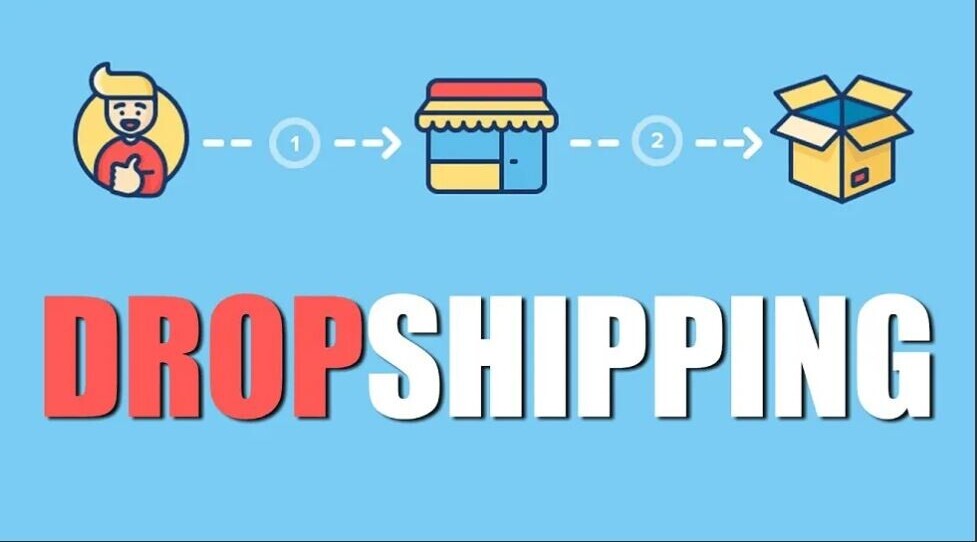Many folks jump into dropshipping dreaming of fast cars and fancy vacations, thinking it’s some kind of cash cow that just keeps mooing. But here’s the thing: while the low barrier to entry is real, it doesn’t mean you’ll be rolling in dough overnight. It’s a business, not a get-rich-quick scheme.
There’s a lot more under the hood than just setting up a website and waiting for money to roll in. Successful dropshippers spend time tweaking their operations, testing marketing strategies, and continually sniffing out the competition. You might see their slick Instagram ads and assume they woke up rich, but trust me, there’s sweat behind that shine.
Seasoned pros in this field will tell you straight — expect to face challenges. It could be finding the right niche, dealing with tricky suppliers, or getting traction in the market. It takes grit and a bit of bullheadedness to stay afloat. So, if you’re considering this route, buckle up for some hard work and patience.
Let’s highlight some real voices from the trenches. Veteran dropshippers often share that had they known the intensity of the journey, they’d have prepped differently. Many advise starting with a solid plan and an understanding that profits take time to build. It’s about playing the long game, not just making a quick buck.
To sum it up, dropshipping isn’t a free ride to a pot of gold at the end of the rainbow. It’s a business model with the potential for profit, sure, but just like any gig, you’ve got to put in the hours, adapt, and keep pushing boundaries to find success.
>>CLICK<< the image below to explore dropshipping on Shopify!

Myth 2: Dropshippers Don’t Need to Worry About Inventory Management
There’s a common misconception that dropshipping lets you bypass the whole inventory headache. No stockroom, no bother, right? Not quite. Just because you don’t physically handle the goods doesn’t mean you’re off the hook when it comes to inventory issues.
Picture having a killer product, and your supplier suddenly can’t keep up with the demand. Now, you’re facing stockouts, angry customers, and potential refunds. Not exactly the dream scenario. The key here is to establish solid relationships with your suppliers. You’ll want to be in the loop with their stock levels and always have a Plan B if things start running dry.
Having a backup supplier can be a real lifesaver. Also, keeping close tabs on which products fly off the virtual shelves and which ones are collecting digital dust lets you make smarter, data-driven decisions about what to stock.
It’s worth diving into metrics and analytics, so you gain insight into buying patterns and prepare accordingly. Knowledge is power, after all. And while your laptop might be your storefront, your logistics chain is what keeps the business pulsing.
Reality check: resting on your laurels with inventory could seriously dent your reputation and profit margins. Getting cozy with inventory management tools and maintaining open lines with your suppliers keeps surprises at bay and your business steady.
>>CLICK<< the image below to explore dropshipping on Shopify!

Myth 3: Dropshipping Equals No Financial Risk
Some folks out there think dropshipping is a no-risk venture. Like, since you’re not buying stock upfront, what could possibly go wrong financially? Let’s clear that up. There are hidden costs that might not seem obvious when you’re getting started.
Marketing is probably the biggest outlay. You’ve gotta stand out in a crowded marketplace, and that means investing in eye-catching ad campaigns. Facebook ads, Instagram promotions, or even Google AdWords can quickly gnaw at your budget if you’re not careful.
Customer service can be another money muncher. Happy customers mean repeat business, so you might end up spending on chat support software or hiring extra hands during peak times to keep customers smiling.
Then there’s the dreaded return, which can shrink any profit you’ve made. A lot of suppliers take returns, but they might not cover all your costs, especially double shipping.
Risk management is part of the dropshipping game. You’re dealing with potential market shifts and volatile cash flow. It’s crucial to keep a keen eye on your financials. Regularly reviewing what’s working and what’s not can keep you out of the red.
Check out how some successful dropshippers have tackled these hurdles. A bit of creativity, a smart tweak here or there, and a refusal to give up is what sets apart the ones who thrive from those who dive into financial trouble. It’s less about playing safe and more about playing smart with your resources.
>>CLICK<< the image below to explore dropshipping on Shopify!

Myth 4: Anyone Can Succeed at Dropshipping Without Any Experience
You might’ve heard that all you need is a laptop and Wi-Fi to launch your dropshipping empire. While technically true, going in with zero know-how isn’t the best play. It’s not rocket science, but a bit of groundwork can save you from some major headaches.
First up, you gotta know your way around online marketing. Catchy ads and engaging social media posts don’t create themselves. You’ll need a good grip on how to target your audience, use ad tools, and analyze campaigns to get any meaningful traction.
Beyond marketing, product research is your secret weapon. Scoping out trends, checking out competitor handbooks, and zeroing in on what customers are craving sets you up for success. Understanding this landscape helps you choose products that not only sell but keep you in the black.
And let’s not forget about customer service. You’ll want to develop some pretty solid communication skills. Consumers love it when someone’s on the other end listening and genuinely helping out with their concerns. It’s not just about selling, but building a brand people trust.
For rookies, there are communities and resources out there to guide you through this wild terrain. Online courses, forums, and mentorships can speed up your learning curve. Even some laid-back YouTube videos can offer nuggets of wisdom to get you started.
In dropshipping, creativity meets analysis. Your strategies have to pivot based on data, but your branding needs that spark to catch on. It’s a cool mix but demands good-old hard work and a slice of determination.
In my opinion, Shopify is the most trusted venue for dropshipping.
>>CLICK<< the image below to explore dropshipping on Shopify!
Conclusion: Separating Fact from Fiction in the Dropshipping Landscape
We’ve unraveled quite a bit about the myths circling around dropshipping. It’s pretty clear that while the allure of easy money and minimal effort might lure you in, the reality demands more than just hopping onboard and expecting magic.
Aspiring dropshippers, it’s crucial to arm yourself with knowledge. Every myth busted reveals an area where you’ll need to roll up your sleeves and get to work. Your toolkit? Thorough research, strategic planning, and a willing attitude to learn from both successes and hiccups.
Think of dropshipping as a marathon, not a sprint. Sure, it’s got its challenges, but what business doesn’t? Success might look different from person to person, but one thing’s for sure—you’ve got the chance to carve out your own path. Stick with it, keep refining, and don’t shy away from seeking advice when you’re hitting walls.
Closing thoughts? Maintain realistic expectations mixed with a dash of optimism. Just remember, myths might add some sparkle to the dropshipping narrative, but the real story—your story—will shine on its own with honesty, hustle, and heart.
For a more indepth look at Shopify, check out my recent post: How Shopify Works: A Helpful Guide For Beginners





